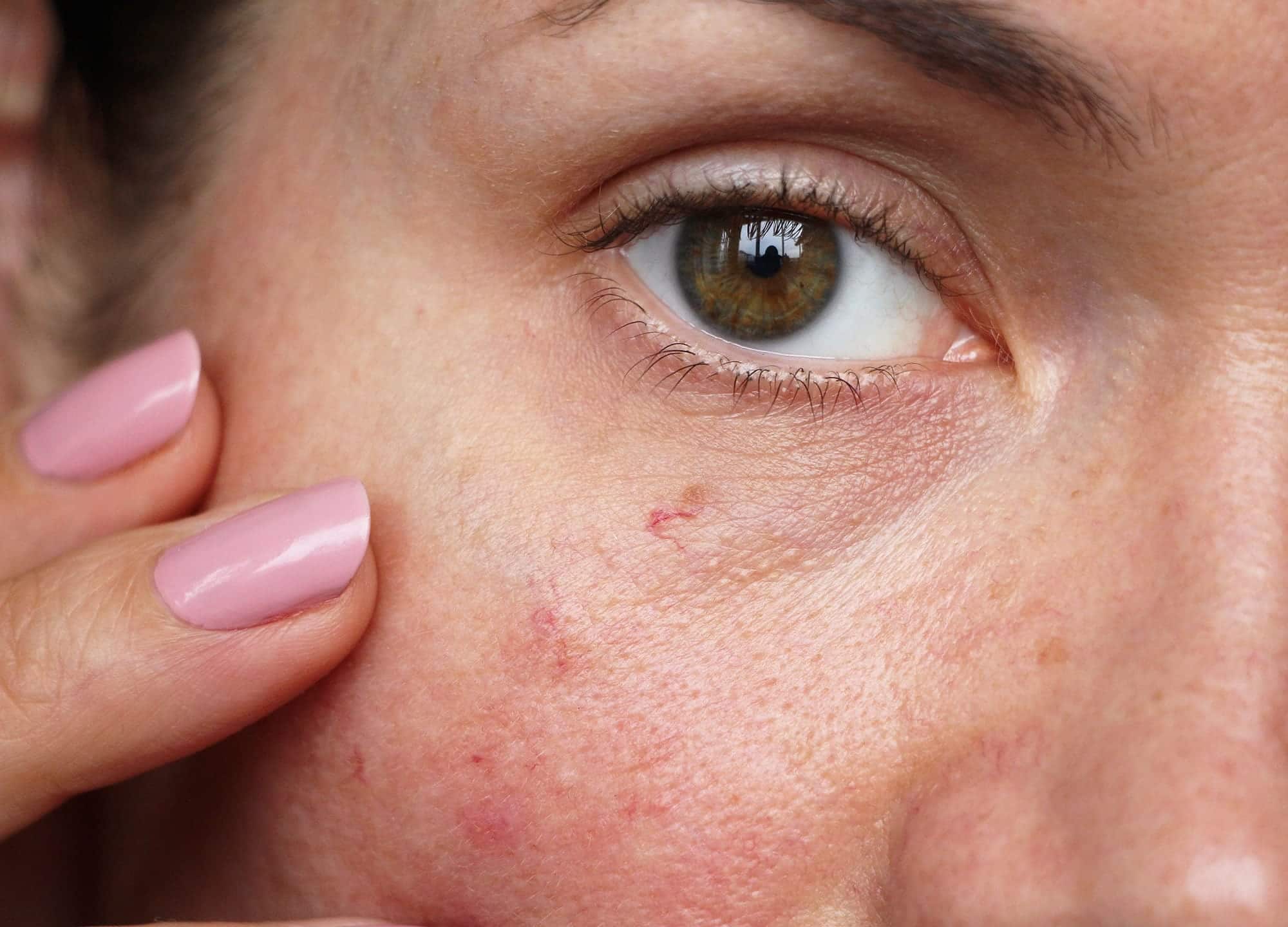Redness is arguably one of the broadest, most all-encompassing skin symptoms out there. Anything from a sunburn to a bug bite to an allergy to surgery to genetic conditions (we could go on, but you get the picture) can elicit redness, technically known as erythema. Similarly, there are also various solutions, but “it’s important to understand the underlying cause of redness in order to properly and effectively treat it,” notes Dr. Alexis Parcells, a board-certified plastic surgeon in Shrewsbury, New Jersey.
Below, doctors share five of their go-to redness solutions and explain what types of redness they best alleviate.
Pulsed dye laser
New York City board-certified dermatologist Dr. Bruce Katz says this particular type of laser is the most effective energy-based redness treatment there is—specifically, for addressing redness caused by broken blood vessels. Technically known as telangiectasias, “broken” blood vessels is somewhat of a misnomer, he points out. These small blood vessels aren’t actually broken; they’re simply visible beneath the skin, usually because it’s become thinner due to years of sun damage breaking down the collagen, he explains. These blood vessels can either cause small, very distinct points of redness or be more widespread and clustered together, making for an overall appearance of background redness. Either way, they’re most likely to pop up on the cheeks, forehead, and nose.
The unique wavelength of a pulsed dye laser targets the hemoglobin in the blood: “It absorbs the laser energy, the blood vessels coagulate, and ultimately, the body destroys them naturally,” Dr. Katz explains. He adds that it’s also an effective treatment for port-wine stains—congenital birth marks caused by a group of thicker, dilated blood vessels that create the appearance of a dark-red mark. Pulsed dye lasers are a good choice for rosacea patients as well, especially for those who have more diffuse areas of redness, says Dr. Katz. While one laser session sometimes can do the trick, typically, two or three sessions are required for best results.
IPL
Intense pulsed light treatments work via a similar mechanism of action as pulsed dye lasers, though they are gentler than their counterparts, notes Dr. Richard Westreich, a board-certified facial plastic surgeon in New York City. For that reason, he likes IPL as an option for treating prolonged redness in postoperative patients. “Erythema is common after surgery, particularly during the proliferative phase of healing, which occurs about six weeks after the fact. There’s a lot of cellular activity and new blood flow coming to the area,” he explains. If it persists for months after, that’s when energy-based treatments can be helpful. Because you’re still dealing with healing tissue, he prefers the milder IPL rather than a laser. Two or three treatments, spaced six to eight weeks apart, are usually needed.
Microneedling
Dr. Westreich notes that microneedling is an effective option for treating both the redness and textural irregularities of scars. “Paradoxically, even though it causes temporary erythema, it really does help minimize redness in the long run,” he explains. “It not only reorganizes the collagen, it also changes the cellular structure in a way that allows the skin to heal differently and look more ‘normal,’’’ he says. Two or three sessions, performed over six to eight weeks, are typically effective.
Steroid creams
As far as topical therapies go, steroid creams are among the gold standards for reducing redness caused by things such as contact dermatitis or allergic reactions, notes Dr. Parcells. These can range from over-the-counter hydrocortisone creams to prescription-strength options, all of which reduce redness via their anti-inflammatory properties, adds Dr. Katz. They can also be used to combat the redness associated with more chronic skin conditions, such as eczema and psoriasis. However, they’re not the best choice for continued use, given that they can cause both thinning of the skin and an unwanted rebound effect that results in more redness once you stop using them. There are other, nonsteroidal prescription topicals that are helpful in this case, such as Elidel and Protopic, notes Dr. Katz. And behavioral changes—learning how to cleanse the skin properly so that it doesn’t dry out, avoiding common irritants—are also very important, he adds.
Rhofade
Both Dr. Katz and Dr. Westreich cite this prescription topical cream as a good option for rosacea patients (and Dr. Westreich says it can actually be used on any type of erythema). It causes constriction of the blood vessels, fading or minimizing the appearance of redness, explains Dr. Katz. The big caveat? You have to use it regularly, since the effects are only temporary. Along with this type of prescription cream, it’s also imperative for rosacea patients to understand and avoid their triggers, adds Dr. Parcells. (Common ones include everything from spicy foods to alcohol to weather changes.) Using sunscreen daily and steering clear of potentially irritating skin-care ingredients is also important and will help ensure you don’t end up with any more redness on top of your rosacea, she says.











